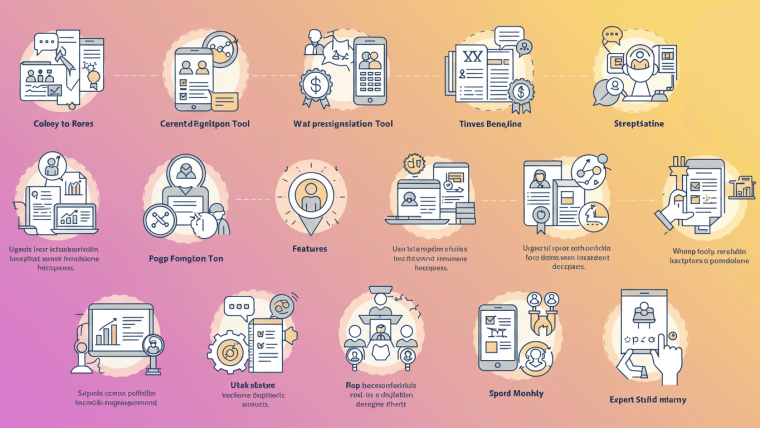Virtual events are one of the best ways to connect, share, and get to know each other. As an event planner, marketing professional, or business owner, you may have noticed some of the excitement around this method of engagement. But just what is a virtual event, and why is virtual events becoming so popular?
As this guide explain these are not your father’s (or mother’s) virtual events: we’ll give you tips on how to go further, provide tools and one-stop-answers to questions to help you create memorable events.
Benefits of Virtual Events
The meteoric rise of virtual events largely comes down to the fact that they solve some major pain points for event-planners. Here are some of its standout benefits:
Cost-Effectiveness
In fact, traditional live events can create a real financial burden with high expenses related to venue costs, catering, travel and accommodations. In fact, virtual events cut out a lot of these costs, which makes them much more affordable. For example, you do not require a huge conference hall; just an efficient virtual platform is sufficient. This savings can be redirected to content, marketing, or interactive tools to drive deeper audience engagement.
Global Reach
The best part about virtual events is that they don’t have any geographic restrictions. Now attendees from Tokyo to Toronto are a click away. It allows hosts to connect with a larger attendance, including registrants who may not have been able to attend because of long-distance logistics.
The 2020 Web Summit, for example, became a fully virtual summit, attracting more than 100,000 attendees from 168 countries.
Data Tracking and Insights
If you look at virtual events, they are a gold mine of data. The right tools allow you to track registrant demographics, attendance rates, session popularity and much more. With this information, you’ll be able to measure the success of the event and enhance your future planning.
Types of Virtual Events
Virtual events come in various formats to suit different goals and audiences. Here are the most common types to consider when planning your own event.
1. Webinars
A webinar is an online seminar, usually for the purpose of teaching an audience the latest information. They often feature expert panels, question-and-answer sessions and slide presentations. Webinars also work well for conveying focused knowledge since they are typically short (1–2 hours).
2. Virtual Conferences
A virtual conference is similar to a physical conference, however, it occurs entirely online. These events typically take the form of keynote speeches, breakout sessions, and networking opportunities. Attendees are usually able to pick and choose what’s on the agenda and which sessions to attend.
3. Workshops
Workshops are small, hands-on events that are meant to teach specific skills. A marketing agency, for instance, could offer a workshop on digital advertising strategies with an expert, where participants can immediately apply tips learned during the workshop.
4. Virtual Trade Shows
Virtual events are a great opportunity to demonstrate products or services via virtual booths. Attendees can explore exhibitors, request for demos, and engage with any representatives via a live chat or video. Virtual trade shows work exceptionally well for tech, manufacturing and similar types of industries.
Planning a Virtual Event
While virtual events eliminate some logistical headaches, they require just as much strategic preparation to succeed. Here’s your step-by-step guide to getting started.
1. Define Clear Goals
What do you want to achieve with your virtual event? Are you generating leads, building brand awareness, or facilitating education? Your goals will shape all aspects of your event, from the content to the tools you use.
2. Select the Right Platform
Not all virtual platforms are created equal. Evaluate platforms based on your event type, audience size, and required features (e.g., breakout rooms, polling tools, or live streaming). Platforms like Zoom, Hopin, and Microsoft Teams cater to different needs.
3. Invest in Marketing
An amazing event means nothing if your target audience doesn’t know about it. Promote your virtual event across social media, email campaigns, and your website. Consider offering early-bird perks or freebies to generate excitement.
Engaging Your Audience
Keeping attendees engaged during a virtual event can be challenging. However, these strategies can help you hold their attention and ensure a memorable experience.
Interactive Elements
Encourage audience participation through live Q&A sessions, polls, and chat functions. For example, platforms like Slido allow attendees to interact with speakers and fellow attendees seamlessly.
Networking Opportunities
Create breakout rooms or virtual lounges where attendees can discuss topics or make connections. Networking apps like Brella are great tools for fostering meaningful conversations in online settings.
Gamification
Add an element of fun to your event by integrating gamification. Leaderboards, quizzes, and scavenger hunts can boost attendee engagement and create a lasting impression.
Technology and Tools
The success of your virtual event depends heavily on using the right tools and technology. Here’s what you’ll need to make your event run smoothly.
Reliable Software
Choose a platform that aligns with your event’s goals. Platforms like Zoom and Microsoft Teams are great for webinars, while Hopin and Airmeet are ideal for larger conferences.
Quality Equipment
Invest in quality audio and video equipment to ensure a professional experience for your attendees. Consider using an HD webcam, a good microphone, and reliable lighting.
Technical Support
Provide attendees with technical instructions beforehand and have support staff available to troubleshoot issues during the event.
Measuring Success
After the event is over, it’s crucial to determine whether your objectives were met. These strategies will help you measure success effectively.
Track KPIs
Key performance indicators (KPIs) such as attendance rates, session engagement, and registration conversions can reveal overall performance.
Analyze Data
Dive into your collected event data to gain deeper insights. For example, look at which sessions were most popular or where attendees dropped off during a session.
Collect Feedback
Send post-event surveys to your attendees to learn what worked and what could be improved. Keep the survey short and sweet for higher response rates.
The Future of Virtual Events
These are no longer just a stop gap for a future world with face-to-face events. They’re around to stay, however, and businesses can use them as a new way to reach an audience throughout the world. The future for virtual events appears even more promising with advancements in VR, AR, and AI.
Hosting a webinar or international conference?} Virtual events break through traditional barriers, creating new opportunities for growth and engagement.
Don’t wait to start planning your virtual event, we are here to help you stay ahead the direction the future is taking and keep your audience engaged.








Webinar Analytics: A Complete Guide to Measuring Success and Improving Performance
The Ultimate Webinar Follow-Up Strategy to Turn Attendees into Customers
Webinar Accessibility Best Practices: How to Make Your Online Events Inclusive for All
Webinar Personalization: Tailoring Content to Audience Segments for Maximum Engagement